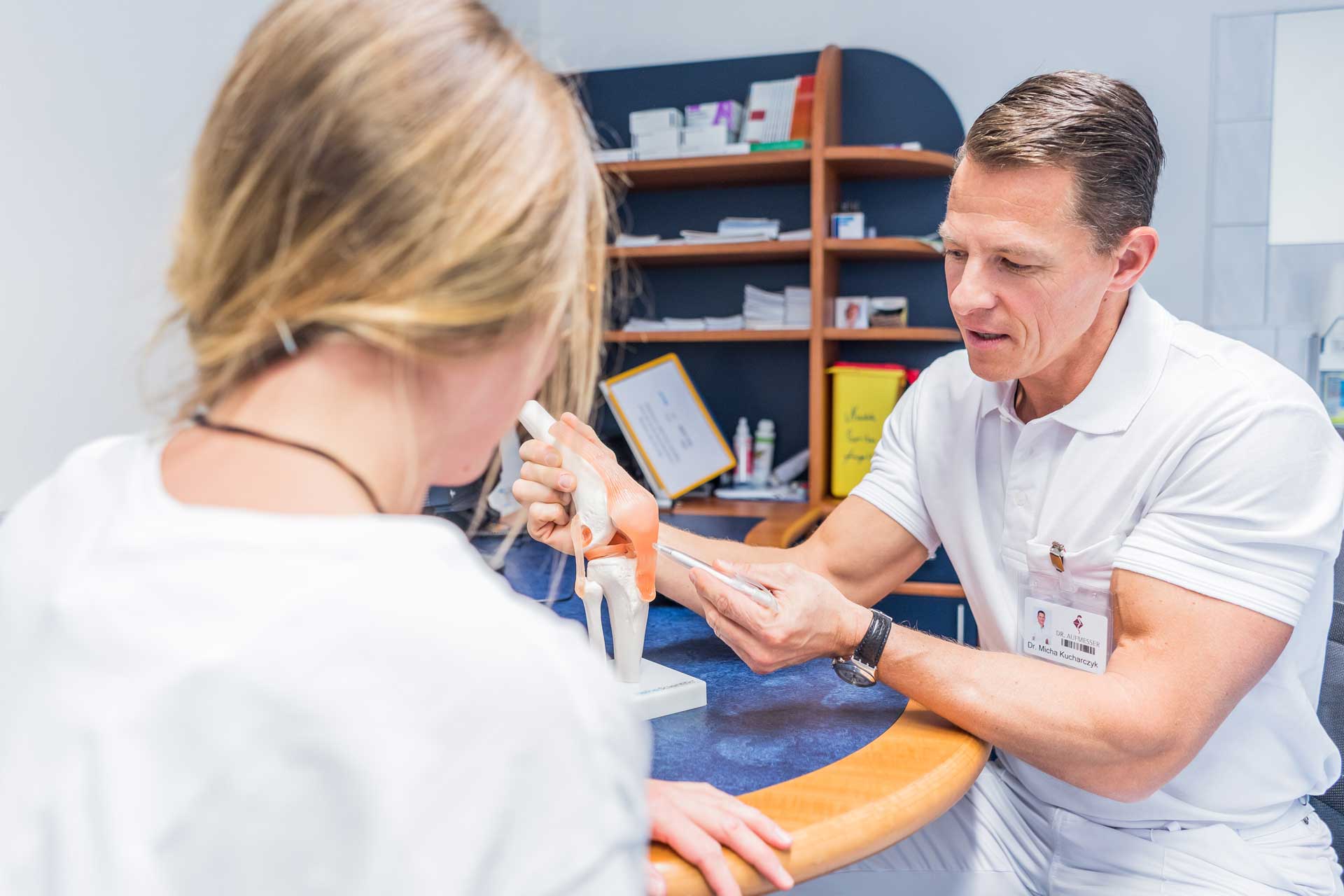In the knee joint, the meniscus acts as a kind of shock absorber and improves the sliding ability of the joint surfaces. Consisting of connective tissue and elastic cartilage, the menisci are located in both legs between the upper and lower leg. Both the outer meniscus and the inner meniscus adapt to every movement and distribute the acting loads equally over the joint.
A torn meniscus and/or a meniscus injury is one of the most common injuries to the knee joint. A torn meniscus is an injury to the inner meniscus and/or outer meniscus of the knee joint, caused by wear or an accident. The more immobile inner meniscus (meniscus medialis) is more often affected by a torn meniscus than the outer meniscus (meniscus lateralis).
Particularly in young patients, it is important to make a diagnosis as soon as possible, as in some cases, refixation of a torn meniscus is possible. A MRI examination is used to determine the type and extent of the tear and, above all, the condition of the cartilage and ligaments.
Depending on the shape of the tear, its location and time, refixation of the meniscus is possible with special anchors. If this is not successful, the torn part of the meniscus must be removed. The aim of the treatment is the refixation or the complete removal of the free meniscus part. Painful movement restrictions and/or blockages in the knee joint are completely eliminated by the operation. The normal function of the knee joint can (in most cases) be restored.
Due to our geographical location in a skiing area, we have specialised in the immediate diagnosis and prompt treatment of knee injuries and can draw on a wealth of experience in this field. The diagnosis and treatment is discussed individually with each patient and in detail.




